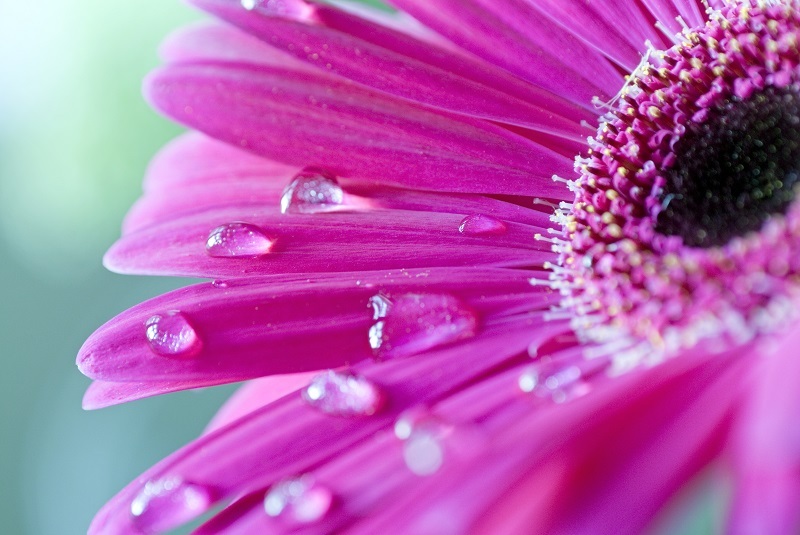Cultivating Gorgeous Hydrangeas at Home
Posted on 23/06/2025
Cultivating Gorgeous Hydrangeas at Home: The Ultimate Guide
If you're captivated by lush, pompom-like blooms and a palette that shifts from blushing pinks to vibrant blues, cultivating beautiful hydrangeas at home might be your next gardening passion! These enchanting shrubs are celebrated for their showy clusters and effortless charm, perfect for both beginner and seasoned gardeners. In this comprehensive guide, you'll discover everything you need to know about growing, caring for, and enjoying hydrangeas at home.
Why Choose Hydrangeas for Your Home Garden?
Hydrangeas aren't just a feast for the eyes--they offer versatility, resilience, and a unique ability to transform landscapes. Their popularity stems from:
- Diverse Colors: Shift bloom shades from blush-pink to brilliant blue by adjusting your soil's pH.
- Extended Blooming: Enjoy months of spectacular color from late spring through fall.
- Minimal Maintenance: Hydrangeas require relatively simple care once established.
- Landscape Value: Perfect for hedges, focal points, or container gardening.

Understanding Different Types of Hydrangeas
Choosing the right hydrangea variety is essential for cultivating gorgeous blooms. Let's discover the popular types for home gardens:
1. Bigleaf Hydrangea (Hydrangea macrophylla)
- Well-known for large, mophead or lacecap blooms
- Color can range from blue to pink depending on soil pH
- Prefers partial shade and moist, well-drained soil
2. Panicle Hydrangea (Hydrangea paniculata)
- Produces conical, creamy-white flowers fading to pink
- Tolerates full sun better than other types
- Highly cold-hardy and adaptable
3. Smooth Hydrangea (Hydrangea arborescens)
- Popular varieties like 'Annabelle' with massive white spherical blooms
- Floriferous and hardy; thrives in shade or sun with consistent moisture
4. Oakleaf Hydrangea (Hydrangea quercifolia)
- Distinctive foliage, turning burgundy in fall
- Cone-shaped flowers; best with some afternoon shade
Essentials for Cultivating Hydrangeas at Home
To successfully grow hydrangeas at home, start with these essentials:
1. Selecting the Perfect Site
- Sunlight: Most types prefer morning sunlight and afternoon shade. Too much sun can scorch the leaves, while deep shade curtails bloom production.
- Soil: Hydrangeas thrive in well-drained, rich, slightly acidic to neutral soil.
- Air Circulation: Good airflow helps prevent fungal diseases.
2. Preparing the Soil
Healthy soil is the foundation of stunning hydrangea blooms.
- Amend with organic compost or well-rotted manure to enrich nutrients.
- Test soil pH. For blue flowers, maintain pH 5.2-5.5; for pink, keep it above pH 6.0.
- Check drainage; waterlogged sites should be avoided.
How to Plant Hydrangeas for Optimal Results
Proper planting is essential for healthy, gorgeous hydrangeas at home.
Step-by-Step Planting Guide:
- Timing: Plant hydrangeas in spring or early fall for best root establishment.
- Spacing: Allow 3-10 feet between plants depending on variety size.
- Digging the Hole: Dig a hole twice as wide but just as deep as the root ball.
- Planting: Set the hydrangea in the hole, ensuring the top of the root ball is level with the ground.
- Backfilling: Fill with amended soil and water thoroughly.
- Mulching: Apply 2-3 inches of mulch to retain moisture and suppress weeds.
Hydrangea Care Throughout the Year
After planting, consistent care ensures a healthy, thriving plant. Here's how you can maintain your hydrangeas all year long:
Watering
- Frequency: Water deeply 1-3 times a week, particularly during dry spells.
- Avoid shallow watering, as it encourages surface roots.
- Mulch helps conserve soil moisture.
Fertilizing
- Frequency: Fertilize in early spring as new growth emerges and again after the first flush of blooms.
- Use an all-purpose, slow-release fertilizer suited for flowering shrubs or specialized hydrangea blends.
- Avoid over-fertilizing, which can reduce blooming and increase leafy growth.
Pruning Techniques
- Bigleaf & Oakleaf Hydrangeas: Prune immediately after blooming (they bloom on old wood).
- Panicle & Smooth Hydrangeas: Prune in late winter or early spring (they bloom on new wood).
- Remove dead or weak stems annually to invigorate plant growth and improve air circulation.
Winter Protection
- Apply a thick mulch layer after the first frost to insulate roots.
- In colder regions, use burlap or plant covers to shield hydrangeas from harsh winds.
Adjusting Hydrangea Flower Color: The Magic of Soil pH
One of the most fascinating aspects of cultivating hydrangeas at home is their ability to change bloom color in response to soil chemistry. Here's how to manipulate color:
- To Turn Blooms Blue:
- Add aluminum sulfate to the soil
- Maintain soil pH between 5.2-5.5
- Use acidifying mulches like pine needles
- To Turn Blooms Pink:
- Add garden lime to increase the pH above 6.0
- Limit aluminum in the soil
- Use alkaline types of compost
Note: White-flowering hydrangeas remain white regardless of soil pH.
Troubleshooting Common Hydrangea Problems
Even the hardiest hydrangeas can face issues. Here's how to keep your home-grown hydrangeas looking gorgeous:
1. Wilting Leaves
- Cause: Usually due to insufficient watering or extreme heat.
- Remedy: Water more frequently and add mulch to retain soil moisture.
2. Lack of Blooms
- Cause: Pruning at the wrong time, excessive fertilizer, or winter damage.
- Remedy: Prune according to type, and avoid heavy nitrogen fertilizers.
3. Leaf Spots & Powdery Mildew
- Cause: Fungal diseases, often encouraged by overcrowding and lingering moisture.
- Remedy: Improve air circulation, avoid overhead watering, and use appropriate fungicides if necessary.
4. Pests
- Aphids, spider mites, and scale insects occasionally feed on hydrangeas.
- Control: Spray affected areas with a strong jet of water or horticultural oil.
Hydrangeas in Landscape and Container Design
Hydrangeas add timeless elegance to any home landscape. Here are creative ways to showcase these floral wonders:
In the Landscape:
- Accent Plants: Use hydrangeas as focal points at entries and garden corners.
- Hedges: Line property boundaries with showy panicle or bigleaf varieties.
- Companions: Pair hydrangeas with ferns, hostas, and shade-loving perennials for lush borders.
Container Gardening:
- Choose compact varieties such as 'Cityline', 'Mini Penny', or 'Little Lime'.
- Use large containers with drainage holes and quality potting mix.
- Water and feed more regularly, as containers dry out faster than garden beds.
- Overwinter potted hydrangeas by moving them to a sheltered location in freezing climates.
Propagating Hydrangeas: Grow New Plants for Free
Multiply your collection or share gorgeous hydrangeas with friends using these simple propagation techniques:
1. Stem Cuttings
- Take 4-6" softwood cuttings in early summer
- Remove lower leaves and dip cut in rooting hormone
- Plant in moist potting mix; cover lightly with plastic for humidity
- Roots develop in 2-3 weeks
2. Layering
- Bend a low-growing branch to the ground and wound it slightly
- Cover with soil and pin in place; keep moist
- Sever and transplant after roots form (6-12 months)

Fun Facts and Tips for Hydrangea Enthusiasts
- Hydrangeas symbolize gratitude, grace, and abundance in flower language.
- The name "hydrangea" means "water vessel," reflecting their love for moist soil.
- Dry hydrangea blooms make stunning everlasting floral arrangements.
- Regular deadheading encourages repeat flowering and neat appearance.
- Protect blooms from late frosts in spring by covering plants overnight.
Your Journey Toward Cultivating Stunning Hydrangeas at Home
With the right knowledge, care, and a little patience, anyone can cultivate magnificent hydrangeas at home. These rewarding shrubs will fill your garden with color, texture, and year-round interest. Whether you favor pastel pinks or dazzling blues, hydrangeas transform any outdoor or indoor space into a haven of natural beauty.
Now that you're equipped with this comprehensive guide, it's time to plant, nurture, and enjoy your own gorgeous hydrangeas at home!
Frequently Asked Questions
- Q: Can hydrangeas grow in full sun?
A: Some varieties, such as Panicle hydrangeas, tolerate full sun better, but most thrive with morning sun and afternoon shade. - Q: How long do hydrangea flowers last?
A: Blooms can last several weeks, even months on the plant, and many varieties offer attractive dried flowers through winter. - Q: Is it possible to grow hydrangeas indoors?
A: While typically outdoor plants, compact hydrangea varieties can be grown indoors if they receive bright indirect light and consistent moisture.
Start your hydrangea journey today, and let these stunning blooms transform your home and garden spaces!
Latest Posts
Explore the best plants for hassle-free office care
Birthflowers: A Journey Through Blooming Traditions
Simple Tricks to Keep Your Bouquet Lasting Longer





